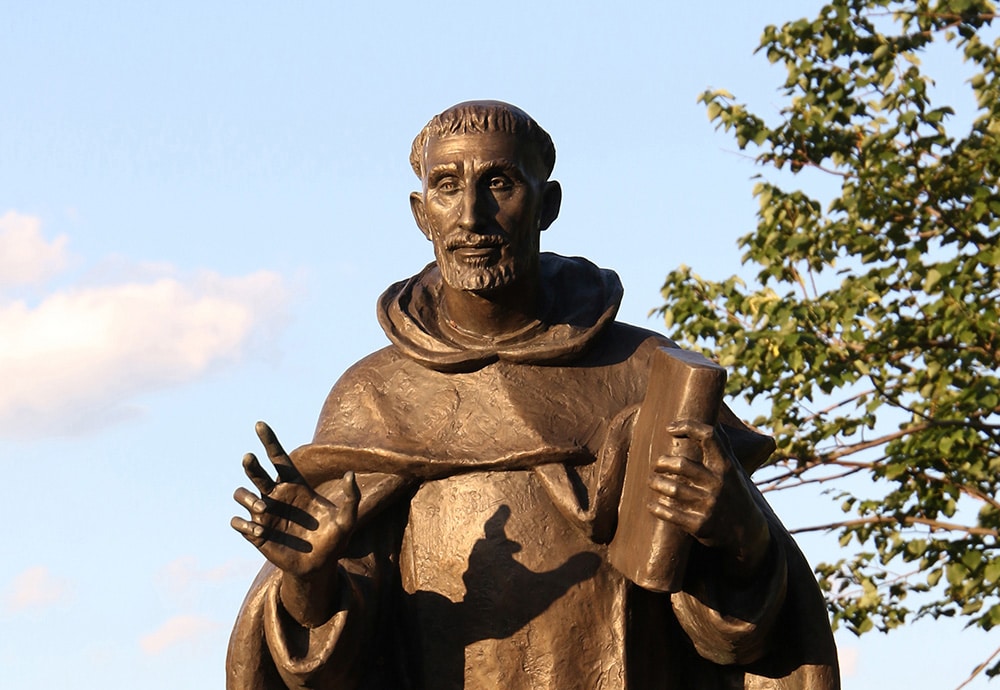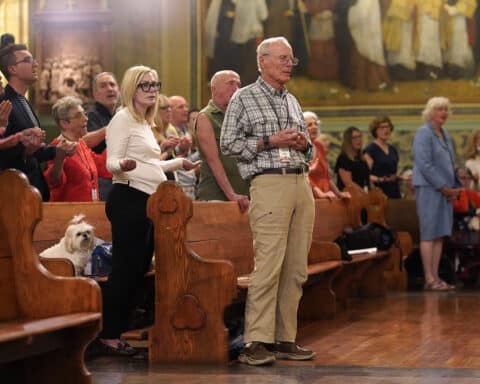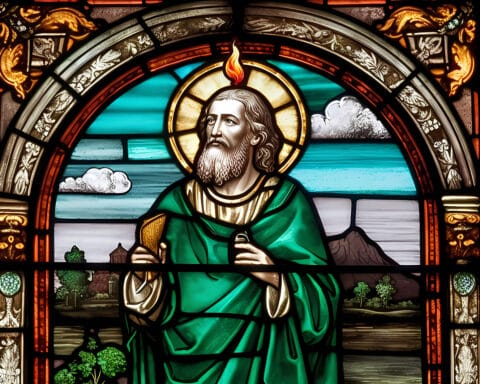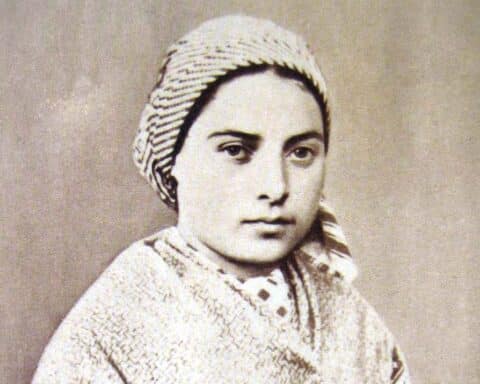Twelve years after St. Dominic Guzman died on Aug. 6, 1221 — 800 years ago — there was a need to move his bones from their original tomb. The friars who bear his name grew anxious when the appointed day approached. After St. Francis of Assisi and St. Anthony of Padua were canonized within two years of their deaths, they were hoping that Dominic’s veneration would soon be realized. They feared, however, repercussions if the exhumation of Dominic’s corpse indicated foulness. Not only might Dominic’s cause for canonization have been stifled, but also the friars’ preaching might have been discredited.
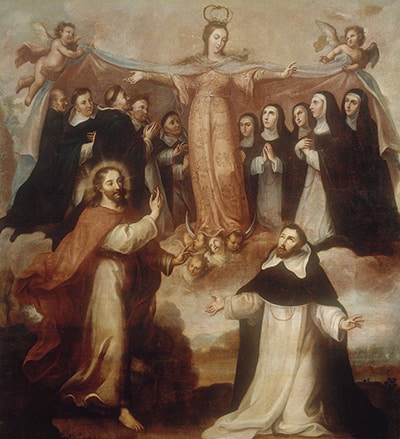
The tomb was opened during a midnight ceremony. The Dominican Order’s procurator (head of temporal affairs) had the honor of breaking through the cement vault and then removing the stones sealing the casket. When he did, a sweet, pungent fragrance emerged from a small hole in the lid. All those who gathered — Church officials, townspeople as well as Dominican friars — were overwhelmed. With a legacy of apostolic vigor, intense holiness and miracles, the bouquet clinched a declaration of Dominic’s sanctity. Pope Gregory IX gave the official proclamation the following year.
The events surrounding Dominic’s canonization do not present the only instance of Dominican near envy of St. Francis’ legacy. We see Il Poverello recognized as a universal saint and “another Christ,” while Dominic is known, mostly by historians, as a vir ecclesiasticus (a “man of the Church”). We note that Francis wrote extensive verse that is frequently cited today, while the only script from Dominic’s hand is a brief admonition he made to nuns. And we have yet to see a pope call himself “Dominic.”
But, for the most part, we have found consolation in another way. Dominic possessed a unique array of qualities that not only bespeak greatness but have enabled Dominicans to truly flourish as preachers. These characteristics fill us with both awe and gratitude that we have followed in his footsteps. We gladly call Francis, like Dominic, “Holy Father,” but we see in Dominic the quintessence for our way of life.
A love for others
Dominic’s most characteristic quality was assuredly love of Christ. He normally spent the night uniting himself to Christ in prayer, sometimes being found on the chapel floor as friars filed in for morning prayer. Much of that time was given to meditation on the Savior’s preaching the ever-gracious kingdom of God and its call to conversion. When Dominic rose to begin the day, he united himself to Christ again by echoing his message. Walking barefoot, begging for bread and calling others to preach, he imitated Christ’s abandonment to divine providence.
Dominic’s care for others complimented his love of Christ. He loved people not simply because of Christ’s command or because he saw Christ in them, but from a natural compassion. As a schoolboy, he sold his parchments to buy food for the hungry during a famine. Later, he offered to sell himself into slavery to ransom a prisoner.
Dominic’s concern for others ran deeper than meeting their material needs. He worried about their eternal salvation. When he prayed at night, he could be heard asking, “God, what will become of sinners?” Once, he spent a night debating with an innkeeper who had fallen under the influence of the purist Albigensian sect. By daylight, with his mastery of argument and dominance of the Gospels, Dominic convinced the man of the truth of Catholic teaching.
Founding an order
Dominic was truly a man of the Church. He saw himself as an apostle trained by the Master himself. (He always carried either the Gospel of Matthew or the Letters of Paul with him.) He also felt part of the primitive apostolic community whose daunting task was to preach the Gospel to the world.
As a young priest, he accompanied Diego, bishop of Osma in Spain, on an ecclesiastical mission to Denmark. When they passed through southern France where the puritanical sect held the Church in contempt for its possessions, their hearts hung heavy with compassion. They were saddened that scandal was depriving the people of Christ’s presence in the sacraments. When they arrived in Scandinavia, they dreamed of venturing into the pagan lands to the east to preach the Gospel. Gradually, Dominic’s vision became clear. He would start an order of preachers (the “Order of Friars Preachers” is the official name of the Dominicans) who would win the minds of people with sound doctrine and their hearts with absolute simplicity of lifestyle.
Besides having an appreciation for theology and a passion for preaching, Dominic possessed a genius for organization. He did not author any books, but he did bequeath to his Dominican brothers a basic constitution that has served well for eight hundred years. Because of its clarity and flexibility, the Dominicans have endured the upheavals of the centuries. When other orders have splintered, Dominican friars have remained united. The Dominican constitution calls for democratic election of superiors who become priors, the first among equal brothers. Whether from an egalitarianism or simple humility, Dominic eschewed the title “abbot” and insisted on being called Brother Dominic. Hence, Dominicans are “friars,” derived from the Latin word for brothers.
‘Beloved by all’
Both his concern for doctrine and his sense of organization led Dominic to send his friars to cities with great universities. Paris, Bologna and Oxford were sites of early Dominican communities. In short order, Dominican friars became masters of philosophy and theology. The order’s identification with these studies has created an impression that its friars are overly intellectual. No doubt, some of us have become vain about intellectual achievement. A few might consider themselves more as sons of Thomas Aquinas than of Dominic himself. Yet the order has propagated saints esteemed for charity, such as St. Martin de Porres and St. Rose of Lima.
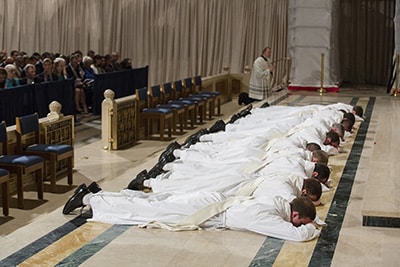
As a final quality creating esteem among Dominicans, Dominic was known for his joyfulness. He was a happy, affable human being. His successor as Master of the Order, Blessed Jordan of Saxony, wrote that he dedicated his nights praying to God and his days sharing God’s mercy. Jordan continued by describing the effect of this binary operation: “All men were swept into the embrace of his charity, and, in loving all, he was beloved by all.”
It has been said that the accomplishments of Dominic’s followers have often been attributed to him. Nowhere is this truer than in the legend that he received the Rosary from the Virgin Mary. Without a factual record of that occurrence, Dominicans cannot give it historical credibility. But there is no shortage of testament to Dominicans promoting the Rosary. The Dominican friar Alain de la Roche originally divided the saying of 150 “Hail Marys” (the number of the Psalms in Scripture) into three groups commemorating the divine mysteries of Jesus’ birth, death and glorification. A hundred years later, in 1569, Pope St. Pius V, a Dominican, bestowed on the order the unique privilege of forming Rosary confraternities.
As noted, Dominic had an appreciation for study and the intellectual life. His legacy attracted to the order a young man in southern Italy named Thomas Aquinas. Thomas had the intellectual acumen and family prominence to become abbot of the magnificent Benedictine monastery at Monte Cassino. But he desired to become a Dominican and had to withstand considerable family pressure in that pursuit. His desire was likely kindled by more than the opportunity to study. He also wanted to preach. As the Dominican motto prescribes, Thomas wanted to “contemplate and to hand down to others the fruits of contemplation.” Another factor in Thomas’ decision to follow Dominic was the latter’s option for radical poverty. Thomas later wrote that the foremost lesson of the crucified Christ is poverty.
Growing the order
Dominic did not intend the order to be an all-male association. Before he received a papal charter for his friars, he established a monastery of nuns. The women had come back to the Church after following the Albigensian heresy. Rejected by their families, they looked to Dominic for support. Today, there are nearly 200 Dominican monasteries around the world with more than 2,000 nuns praying for the friars’ preaching.
Nuns live in a cloistered monastery. Dominican sisters normally reside in convents, belong to autonomous congregations and serve in active ministries. Dominican tertiaries (or lay Dominicans) are men and women, married and single, living a Dominican spirituality based on prayer, study, ministry and community. They form the largest branch of the order and can also claim some of its most prestigious members. The incomparable Catherine of Siena, patroness of Italy and Europe, was a tertiary, although she wore a habit, much like her predecessor, the recently canonized St. Margaret of Castello. Blessed Pier Giorgio Frassati lived in the first quarter of the 20th century when he distinguished himself as a social activist, patron of the poor and mountaineer; beatified in 1990, Pier Giorgio has been extolled as a model for youth.
On his deathbed, Dominic told his brothers that he would be of more use to them dead than alive. He meant that he would pray for them in heaven. The friars did not want him to leave them, but after 800 years we see how effective his prayers have been.
Father Carmen Mele is with the Southern Dominican Province.

